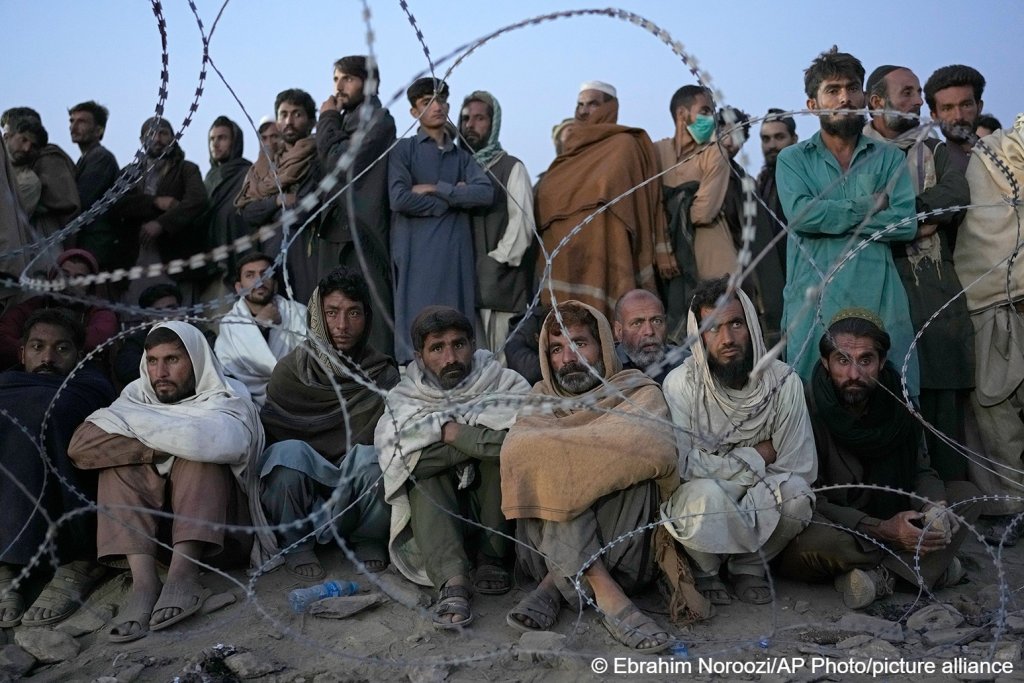More than 1.2 million Afghan nationals have left Iran for Afghanistan since the beginning of the year under pressure from Iranian authorities, according to the UN. Around half of them were forcibly deported. With a looming hunger crisis, various charities and international bodies are now warning of an impending crisis.
The exodus of Afghans from Iran had increased significantly in recent weeks, according to Babar Baloch, a spokesman for the UN refugee agency UNHCR.
Since the beginning of June alone, more than 600,000 people have arrived in Afghanistan from Iran, Baloch highlighted, with roughly around 40,000 arrivals on various single days over the past two weeks.
Baloch also stressed that many of those returnees were seen arriving only with what they were wearing at the time.
This suggests that Iranian authorities did not afford them a chance to gather their belongings, forcing them to leave the country with little to no advance notice.
The Norwegian Refugee Council (NRC) said that these people are "in urgent need of shelter, clean water, food, legal documentation, education, and healthcare," adding however that Afghanistan continues to face extreme challenges in "receiving and reintegrating large numbers of returnees," against the backdrop of the limited public services in the country.
Foreigners in their own land
Countless people among the expelled Afghans meanwhile weren't even born in the country, Baloch added, since Iran has long served as one of the main host nations to Afghan refugees for decades.
The representative of the Red Cross and Red Crescent Movement (IFRC) in Afghanistan, Sami Fakhouri, reported that this is why many of the new arrivals don't even know where they should go to live now and where to even begin with building a new life in a country that essentially is foreign to them.
Fakhouri added that many of the recent returnees have also expressed grave concern for their children -- especially for the safety and education of girls amid an ongoing ban by the Taliban government on secondary and higher education for women.
Read AlsoAfghan migrants expelled from Iran subject to abuse and trauma
Iran removing Afghans against backdrop of Middle East crisis
This large number of returns comes after security forces in Iran had stepped up their state repression against Afghans, especially at the height of the war between Israel and Iran last month.
Iranian state media reported that hundreds of Afghans were arrested during this time on charges of espionage or sabotage.
Iran meanwhile also announced that it would continue to expel all foreigners without a valid residence permit.
However, even prior to this military escalation, there had been widespread debate in the country about the high volume of refugees coming from neighboring Afghanistan, who had left their homeland after the Taliban took power in 2021.
Less than 12 months ago, Iran had publicly stated its intention to send a total of 2 million people back to Afghanistan.

Read AlsoUN expresses grave concern over Afghans affected by Iran-Israel conflict
More than half of Afghanistan in need of assistance
The NRC meanwhile estimates that the total number of returnees to Afghanistan from various countries in recent months -- including Iran -- has reached more than 1.4 million people.
There has also been a major rise in forced returns from Pakistan, which borders Afghanistan to the east and to the south. The number of Afghans sent back from Pakistan had already breached the mark of 1 million in April this year.
This adds to nearly 23 million Afghans in the country who already are in need of humanitarian assistance, according to the UN -- which is over half the population.
Various aid organizations have now sounded the alarm over a likely worsening of this overall humanitarian crisis in Afghanistan in light of the unfolding situation.
"Afghanistan itself is overwhelmed with hosting the displaced people," the charity World Vision said in a statement, adding that the economy of the country was also just shy of collapse and unable to meet the needs of most people.
The NRC shares the view that Afghanistan is not prepared to provide sufficient humanitarian response to the sudden number of new arrivals, highlighting that the country was already "crippled by severe aid cuts."
Read AlsoNowhere to call home: Afghans in Pakistan forced to return
Charity staff hosting returnees in own homes
In fact, Afghanistan's refugee response plan is facing dire financial shortcomings, with less than one-fifth of its required budget being covered, according to Refugee Funding Tracker -- a collective of UN agencies and NGOs monitoring the funding needs of various refugee host nations.
The United Nations Office for the Coordination of Humanitarian Affairs (OCHA) provides a similar percentage for the target number of the humanitarian response plan, saying that only 22 percent was met.
"We are seeing families arrive exhausted and distressed to a country that has very limited capacity to support and reintegrate them. We are doing everything we can, but the scale of needs is exceeding the current resources," said Jacopo Caridi, NRC Country Director in Afghanistan.
"Local communities have shown remarkable solidarity. Many of our staff are hosting returnee families in their homes. The authorities are doing their best to mobilize the few resources they have, but the local systems are not equipped to cope with such tremendous needs," Caridi added.
"If current trends continue, Afghanistan could see over three million returnees by the end of 2025."
Read AlsoPakistan: Deportation puts Afghan girls at risk
Ten million in risk of starving
A series of poor harvests in the past few years has also been exacerbating the hardship felt by many people in the Central Asian nation.
According to the UN World Food Program, almost ten million people in Afghanistan are facing imminent hunger during these summer months.
Against the growing threat of hunger and desolation, the NRC has renewed its appeal to the international community to halt all involuntary returns to Afghanistan, "as current conditions … do not meet the minimum standards for safety or sustainability."
with dpa
